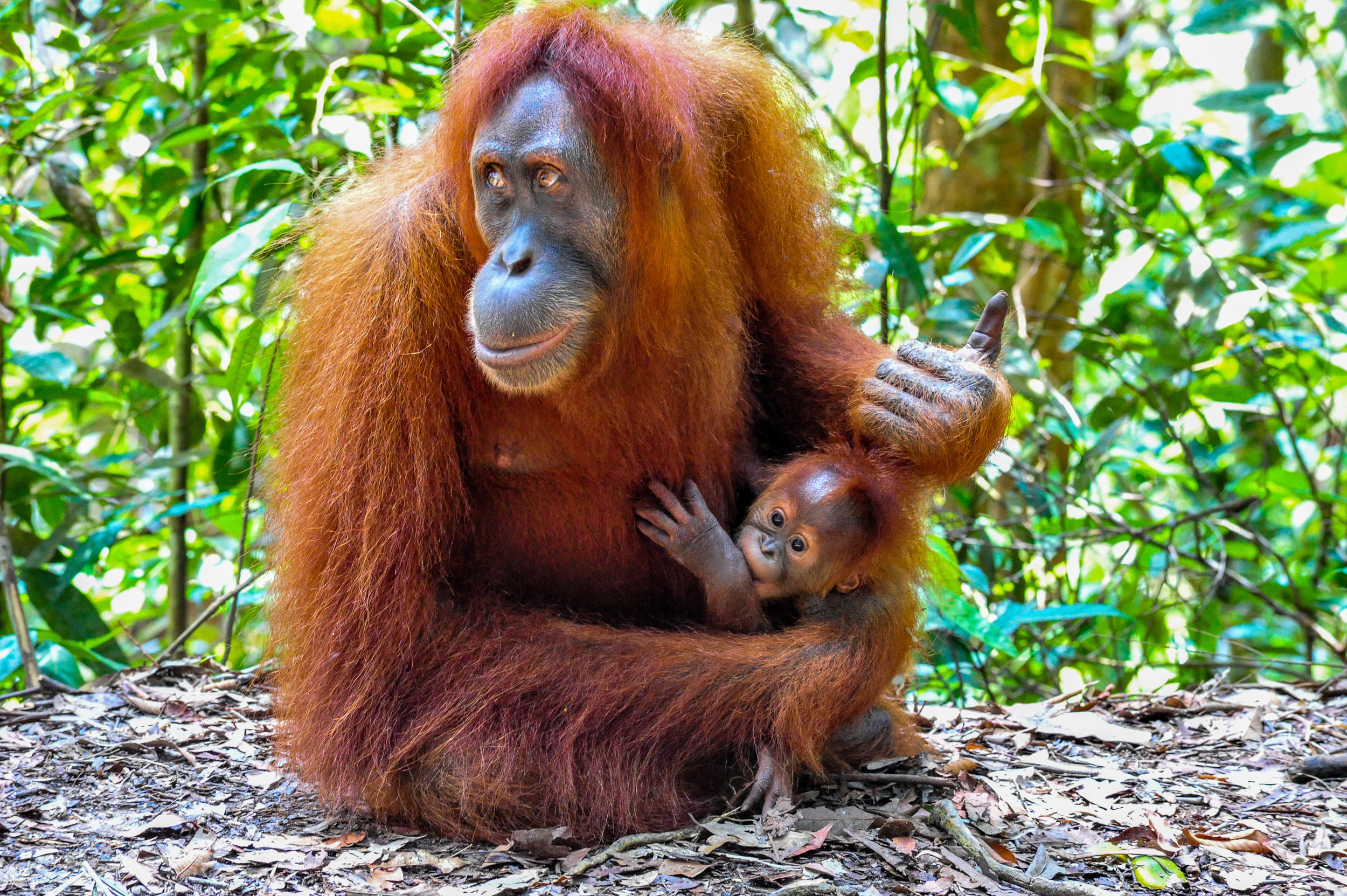Sumatran Orangutan
"Curiosity, Beauty and Hope" by Nick Acuna (Digital)
“This became a very personal piece the deeper I got into researching these incredible creatures and the threat they face with deforestation. Growing up in Colombia, the mountains and rainforests were like a second home to me, they gave purpose and inspiration not just for my art but for life itself.”
Derived from the Malay words for “person of the forest".
Habitat
The Sumatran orangutan lives in the trees of the tropical and subtropical rainforests of Sumatra.
Family Life
Adult males are typically solitary. Females create social structures to prevent being harassed by sub-adult males during the mating season, which can include bonding with other females or non-mating males.
Lifespan
The average lifespan for the Sumatran orangutan is from the mod 40s to the early 50s in the wild and into the late 50s in captivity.
Hunting Habits/Diet
Orangutans are large bodied animals and rely on plentiful high calorie foods with high energy content. They are vegetarians. Fruit makes up nearly all of their diet which they then supplement with leaves, shoots, seeds, buds, flowers, bark and insects. They eat soil to acquire essential minerals and sale
Population
There are an estimated 13,000 Sumatran orangutans in the wild. They are classified as Critical Endangered by the IUCN.
Why Are They Endangered?
The relentless destruction of Sumatra’s rainforests has pushed the Sumatran orangutan to the edge of extinction. Orangutan populations are left fragmented and isolated, making them easy targets for poaching for the illegal pet trade. Conflict also ensues with local communities when the stranded and starving apes are forced to resort to raiding crops.
Status
Critically Endangered
Sources
https://www.worldwildlife.org/species/sumatran-orangutan
https://www.orangutanrepublik.org/become-aware/orangutan-specifics-40237/diet


